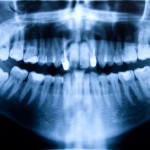
Coronectomy is an alternative technique for the removal of impacted teeth that aims to decrease the risk of inferior alveolar nerve damage. Coronectomy involves the removal of the crown of the tooth leaving to roots in situ although the failure rate of coronectomy is reported to be between 2-38%.
The aim of this review was to assess the rate of reoperation following mandibular third molar coronectomy.
Methods
Searches were conducted in the Medline/PubMed, Scopus and Cochrane Library. Prospective, retrospective or randomised studies published in English evaluating the outcomes of coronectomy with a minimum of 6 months follow-up were considered. Four reviewers assessed study inclusion. Risk of bias was assessed using the criteria; random population selection, definition of inclusion and exclusion criteria, report of loss to follow-up, validated measurements, and statistical analysis. Studies meeting all the criteria were considered to be at low risk of bias those that did not meet 1 of these criteria were classified as having a moderate risk; and those that did not meet at least 2 of these criteria were considered to be at high risk of bias.
Results
- 15 studies involving 1664 patients were included.
- One study was considered to be at low risk of bias, 5 medium risk and 9 at high risk of bias.
- Coronectomy was performed on 2062 teeth.
- Follow-up time ranged from 6 months to 10 years.
- Reoperation was performed on 105 (5.1%) teeth
| Reason for reoperation | Number | Percentage |
| Residual root exposure | 56 | 53.33% |
| Infection | 11 | 10.47% |
| Pain | 10 | 9.52% |
| Residual enamel | 10 | 9.52% |
Conclusions
The authors concluded: –
Reoperation after mandibular third molar coronectomy was low (cases ~5%); the main reasons for reoperation were residual root exposure and symptomatology. Owing to the possibility of late exposure or symptomatology, a follow-up longer than 6 months is recommended until root exposure or the end of the migration process.
Comments
While a number of major databases were searched for this review restricting the inclusion criteria to those published in English may have excluded some relevant studies. Reoperation is considered to be a failure by some surgeons and an earlier review (Dental Elf – 13th Dec 2017) that included 14 studies suggested a failure rate of 7% in comparison with the 5.1% reported in this review. Follow – up times for the included studies ranged from 6 months to 10 years although the median follow-up was 12 months. While this and the earlier review provide some indication of the reoperation/failure risk of coronectomy some additional higher quality prospective studies are required to provide additional information.
Links
Primary Paper
Barcellos BM, Velasques BD, Moura LB, Xavier CB. What Are the Parameters for Reoperation in Mandibular Third Molars Submitted to Coronectomy? A Systematic Review. J Oral Maxillofac Surg. 2019 Jan 23. pii: S0278-2391(19)30016-3. doi:10.1016/j.joms.2019.01.013. [Epub ahead of print] Review. PubMed PMID: 30776332.
Other references
Dental Elf – 13th Dec 2017
Coronectomy – a safe option for deeply impacted mandibular third molars?
this review of coronectomy reoperation rates.
